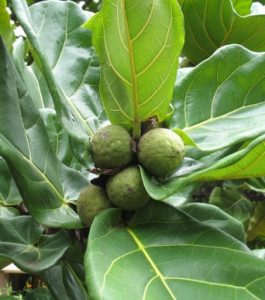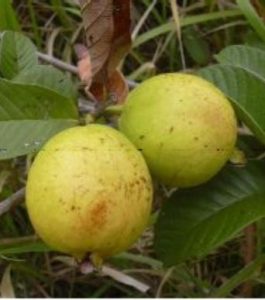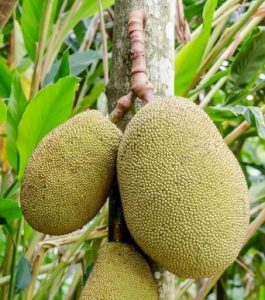 Common Name: Wild loquat
Common Name: Wild loquat
Description
Uapaca kirkiana is a small to medium-sized evergreen or semi-deciduous tree with spreading multiple branches forming a dense rounded crown. The trunk is short and stout, attaining a height of 5-12 m and diameter of 5-25 cm. The bark is dark grey or grey-brown, thick and deeply fissured. Branchlets short, thick with prominent leaf scars. The young shoots are covered with creamy-brown hairs.
Leaves are simple and alternately arranged in clusters concentrated at the ends of branchlets. …Read more
Resources.
Switchboard
Wikipedia
Tree species
Psidium guajava
 Common Name:Guava
Common Name:Guava
Description
Psidium guajava is a large dicotyledonous shrub, or small evergreen tree, generally 3-10 m high, many branches; stems crooked, bark light to reddish brown, thin, smooth, continuously flaking; root system generally superficial and very extensive, frequently extending well beyond the canopy, there are some deep roots but no distinct taproot.
Leaves opposite, simple; stipules absent, petiole short, 3-10 mm long; blade oblong to elliptic, 5-15 x 4-6 cm, apex obtuse to bluntly acuminate, base rounded to subcuneate, margins entire, somewhat thick and leathery, dull grey to yellow-green above, slightly downy below, veins prominent, gland dotted.Read more
References
Switchboard
Wikipedia
Casimiroa edulis
 Common Name:White sapote
Common Name:White sapote
Description
Casimiroa edulis is an evergreen tree to 18 m tall, with spreading, often drooping branches and a broad leafy crown. Bark light-grey, thick and warty.
Leaves palmately compound, alternate, digitate; stipules absent; petiole 5-9.5 cm, finely pubescent; leaflets sessile or subsessile, 3-7, elliptic, ovate or broadly ovate, 4.5-12 cm long, 1-5 cm wide, apex acuminate, retuse or occasionally rounded, base cuneate, margins subserrate, bright green, glabrous or with scattered pubescence on the veins, vennation pinnate, anastomising at the margins. Read more
References
switchboard
Wikipedia
Artocarpus heterophyllus
 Common Name:Jack Tree
Common Name:Jack Tree
Description
Artocarpus heterophyllus reaches 8-25 m in height; straight stemmed, branching near the base at an angle of 32-88 deg; canopy dense, dome shaped or rarely pyramidal; diameter varies with age, in 5-year-old trees it ranges from 3.5 to 6.7 m; trunk rarely buttressed, with a girth of 30-80 cm and a circumference of 42-96 cm; bark greyish-brown, rough, uneven, somewhat scaly; inner bark thick, ochre; all parts smooth, having either no hairs or minute, white hairs up to 0.5 mm long with tips easily broken, giving twigs and leaves a slightly rough feel; trees produce a long taproot; when injured, all living parts of the tree exude a copious, white gummy latex. …Read more
References
Switchboard
Wikipedia